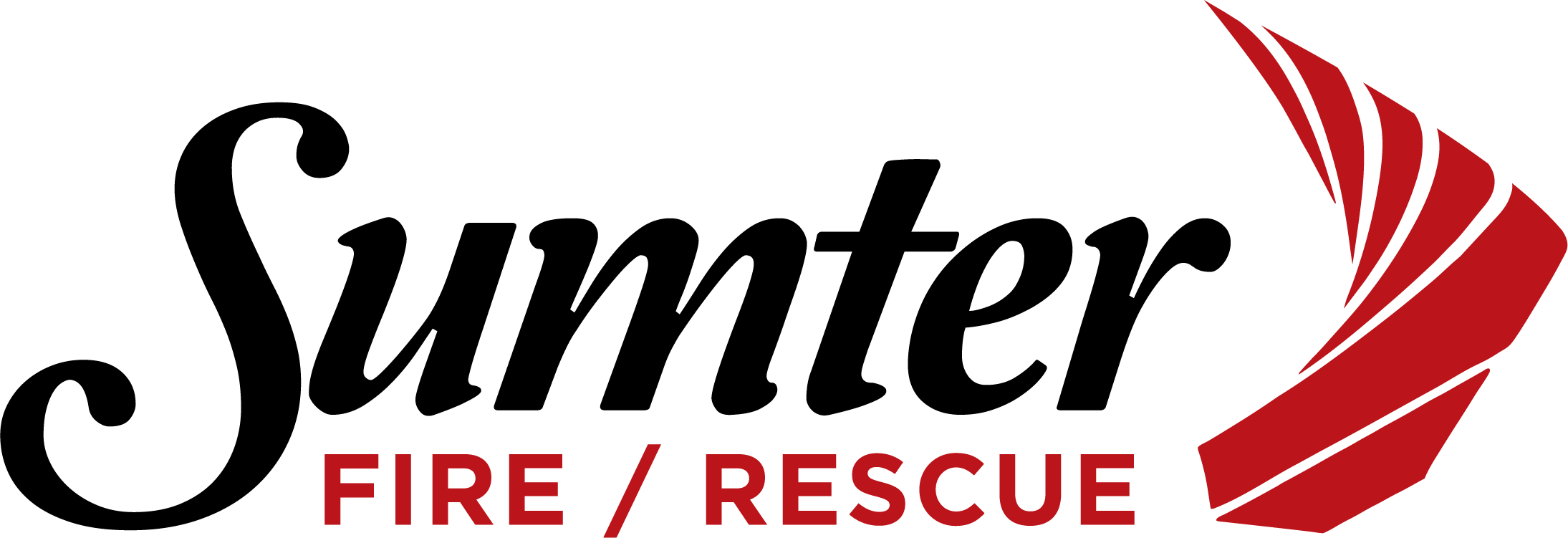PLAN AHEAD - STAY ALIVE!
- Install and Maintain Heat and Smoke Detectors
- These early warning devices help ensure a safe escape. Test smoke detectors every week and replace batteries at least twice a year. If the smoke detector sounds or the heat detector rings, get out fast and stay out.
- Draw an Escape Plan of Your Home
- Whether you live in a house, apartment or mobile home, make an escape plan. Include all doors, windows, hallways, and stairways. Indicate two exits from every room. Alternate exits are needed in case primary exits are blocked by smoke or fire. Select a safe meeting place outside your home and mark it on the plan.
- Practice the Plan with the Entire Family
- First, walk through the plan with everyone to be certain all exits are easily opened and safe to use. Assign someone to help young children, the disabled and the elderly. Hold practice drills at least twice a year. Practice during the day and at night to prepare everyone for different fire situations.
- Get Out and Stay Out
- If you smell smoke, see fire or hear the smoke detector, follow your escape plan. Get low to avoid breathing toxic gases, smoke, and hot air. Always test for danger before proceeding. Feel the door with the back of your hand. If the door is hot, don't open it. Use your second way out. If you are unable to escape, hang a sheet or piece of clothing out the window to signal for help. If the door is cool, follow your escape plan closing all doors behind you. Never use elevators during a fire. Never go back into a burning building for any reason.
- Go To Your Safe Meeting Place
- Once out of your home, everyone should immediately go to the designated meeting place.
- Call For Help
- When your family is gathered at the meeting place, send one person to use a neighbor's home to call firefighters. Everyone else should remain together until the fire department arrives.
- Making the Call
- When calling for help, stay calm! Speak slowly and clearly. Give your name and complete address. Stay on the line until the operator tells you to hang up. Escape first - then call the fire department.
Information provided by Skill Builder
ARE YOU READY?
You should keep an emergency escape ladder near all 2nd and 3rd story windows. If you are at or above the 3rd story, and your primary exit is blocked by fire or smoke, it might be best for you to wait for the fire department's help.
If you are trapped:
- Seal air ducts and cracks around doors with a damp cloth, duct tape or even wet paper.
- Wave a white cloth out of a window to signal your rescuers. Use a flashlight for the night.
- Dial 911 or your fire department's emergency number. Even if the fire department has already arrived, your call will alert them to your exact location.
- If smoke enters your room, you can open a window to let in the fresh air, but be prepared to close it quickly if smoke and heat rush in. Remember! Fresh oxygen will only fan a nearby fire.
EVACUATION
You're fast asleep and your smoke detector goes off. Do you know what to do?
- Stay calm, roll out of bed, crawl to the door.
- Feel all doors for heat before opening.
- If the door is cool and you don't see smoke, quickly go to your nearest exit.
- If you must exit through smoke, stay low and crawl on your hands and knees, covering your mouth and nose with a damp cloth.
- In a fire, never use elevators, use stairs.
- Once outside, go to your safe meeting place.
- Never go back inside a burning building
- Call the fire department from a neighbor's phone.
- If your clothes catch fire, STOP where you are, DROP to the ground and ROLL side to side until the fire is extinguished.
Think now. Make no mistake because just two breaths can wipe out your brain. Smoke rises - so keep low. Don't go back - just two breaths can knock you out!
PREVENTION
Stop fire before it starts.
- Check for and replace all worn, frayed or broken electrical cords.
- Keep flammable/combustible items away from heat sources.
- Never leave cooking unattended.
- Keep Matches, Lighters and smoking materials away from CHILDREN
- Never smoke in bed and have smokers use large deep ashtrays.
- Inspect heating systems and chimneys yearly.
- Regularly clean out all filters and vents, like the lint screen in the dryer.
- Supervise small children when close to heat sources such as the stove or portable heaters.
- Keep a neat and orderly house.
SELF INSPECTION
Inspect for fire hazards and make changes.
- Space Heater:
- Is it kept at a safe distance from anything that burns?
- Is it shut off when you leave or go to bed?
- If kerosene is permitted, are you using the right grade of fuel?
- Wiring:
- Are cords worn or exposed to damage?
- Is your house overloaded, too many appliances plugged in?
- Is your house overloaded, appliance too large for capacity of circuit or extension cord?
- Smoking:
- Look for danger signs, burn marks on furniture.
- Pile-up in an ashtray?
- Smoking in bed or if sleepy?
- Are matches - lighters out of sight of small children?
- Cooking:
- Are you always watching what is cooking?
- Are small appliances unplugged?
- Are things kept off or away from the stove?
- Clean-Up:
- Is old storage or trash piled up? (Don't give fire a place to start)
- Gasoline:
- Are you watching for explosive vapors?
- Is it used for fuel only?
- Is it stored in approved safety can?
- Never brought indoors? Ever?
- Heating System:
- Do you have your chimney and service furnace inspected each year?
- Are all combustibles kept well away?
- Smoke Detector:
- Are they located at each floor level?
- In each sleeping area?
- Fresh batteries?
- Tested weekly?
- Batteries replaced annually?
- Fire Escape Plan:
- Planned 2 exits from each bedroom (if fire blocks one)?
- Bedroom doors kept closed?
- Little children need to know what to do. Do you have fire drills?
FIRE EXTINGUISHERS
If you get there with a fire extinguisher right off you can put it out in seconds. But, you've got to know how and be ready to act. FAST! To extinguish a fire - YOU TAKE AWAY ANY ONE SIDE of the fire.
To Operate:
Think "PASS"
P - pull locking pin
A - aim nozzle
S - squeeze handle
S - sweep
Types:
Water- Cools/Soaks
Class A is for ordinary combustible fires
Not flammable liquids or electrical fires
Dry Chemical- Smothering
Class BC is for regular type for flammable liquids, electrical-not ordinary combustibles
Class ABC is a multi-purpose type for ordinary combustibles, flammable liquids, and electrical fires
Carbon Dioxide CO2- Smothers
Class BC for flammable liquids, electrical, not ordinary combustibles
What's Burning?
Ordinary Combustibles - Class A
Flammable Liquids - Class B
Live Electrical - Class C
Even if you put out a fire make sure to call the fire department. The fire department checks for hot spots to prevent rekindle.
PREVENT COOKING FIRES
Cooking, especially when it involves grease, is one of the leading causes of fire in the home. And while kitchen fires seldom kill people, they injure thousands and cause property damage in hundreds of millions of dollars each year.
- Pay attention to your cooking. Don't overheat grease. Watch for grease overflows that can start fires. If you have to leave the stove to answer the phone or doorbell, turn down the heat. If you'll be gone more than a few minutes, turn it off.
- If your children help cook, make them aware of cooking hazards. Turn skillet and hot handles toward the center of the stove to prevent accidental overturning.
- Don't leave towels or napkins on or near the stove. Don't wear frilly garments - especially those with loose, floppy sleeves - while cooking.
- Keep a Class ABC fire extinguisher in or near the kitchen. (An ABC rating indicates the fire extinguisher can be used on fires involving grease, paper towels, electrical appliances, and other materials commonly found in the kitchen.)
- If the grease fire is small, you may be able to stop it with a handful of baking soda (bicarbonate of soda). But don't use baking powder, which contains flour or starch and could spread the fire. And never use water on a grease fire; it also increases the chance of this type of fire getting out of hand.
- Always have the pot lid handy to smother a small grease fire.
- Don't try to move or carry a pan in which there is a grease fire. Even though moving the pan is a common reaction when a grease fire is discovered, it often results in burns to the carrier and additional fire damage.
- If a fire is large and growing, don't try to fight it - call the fire department!
For more tips, visit: https://www.saveonenergy.com/kids-electrical-safety-guide/

